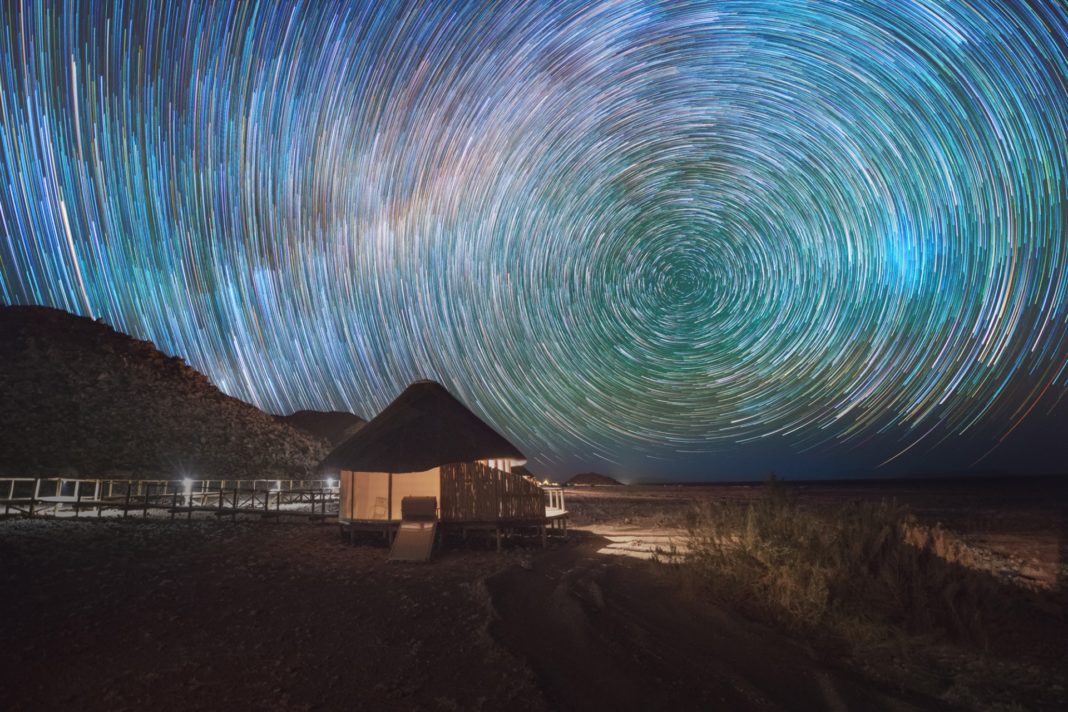Russian photographer Daniel Kordan is a master of photographing the cosmos. In 2016 we covered his journey to the Salar de Uyuni, where he captured millions of brilliantly hued stars reflected in the world’s largest salt flat. Recently, Kordan returned from a trip to Namibia where he mapped swirling trails of stars above the Deadvlei, a white clay pan speckled with the 900-year-old tree skeletons, and other sites across the Namib desert.
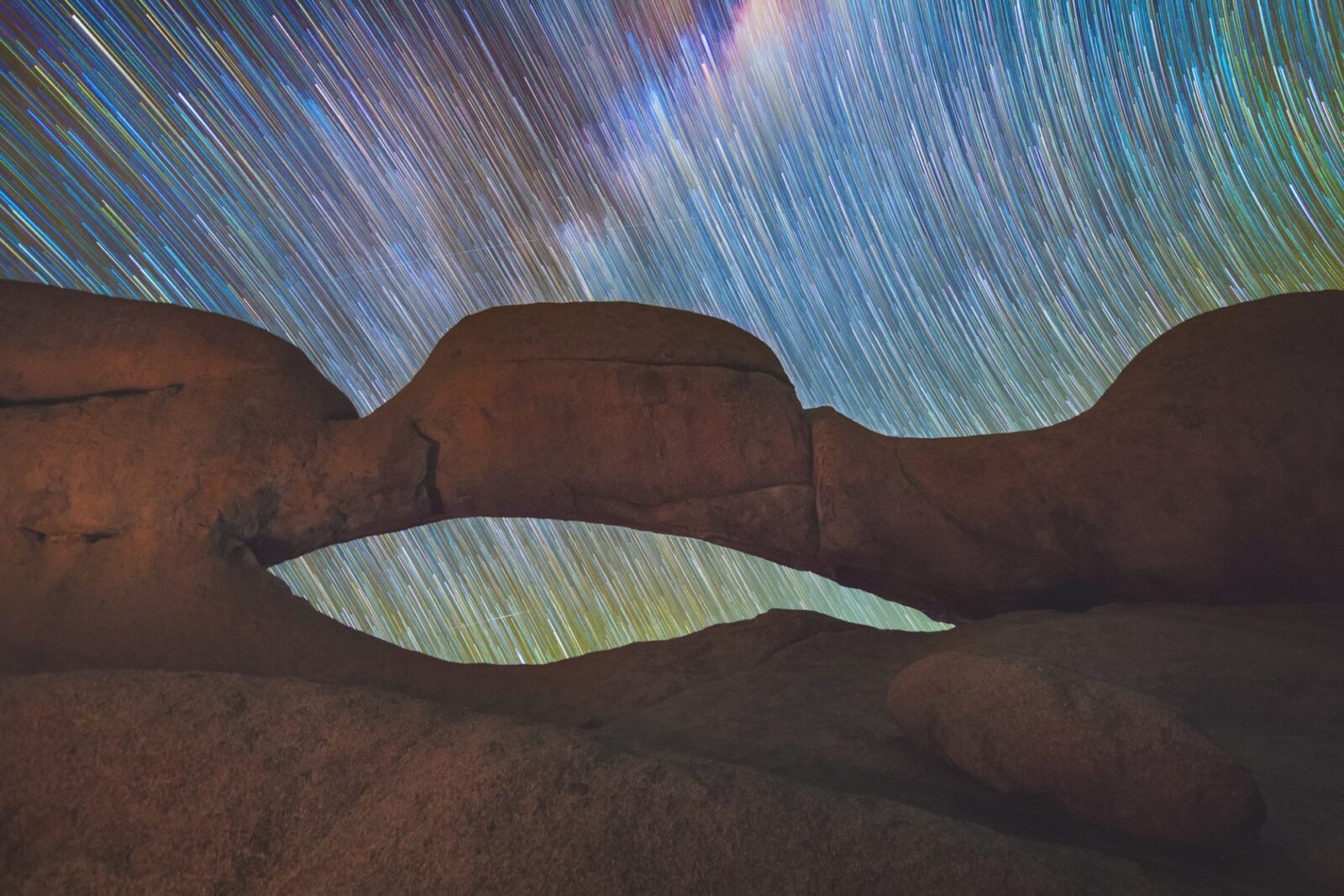
The images feature vortexes of multi-colored stars streaked across the sky like post-impressionist paintings. The Milky Way’s warm and cool tones intermix to create a kaleidoscopic vision of the sky above, and illuminate the barren desert landscape below. To capture such images yourself, Kordan suggests creating a time lapse with a wide angle lens, and utilizing an app like PhotoPills which allows you to easily predict the position of the stars.
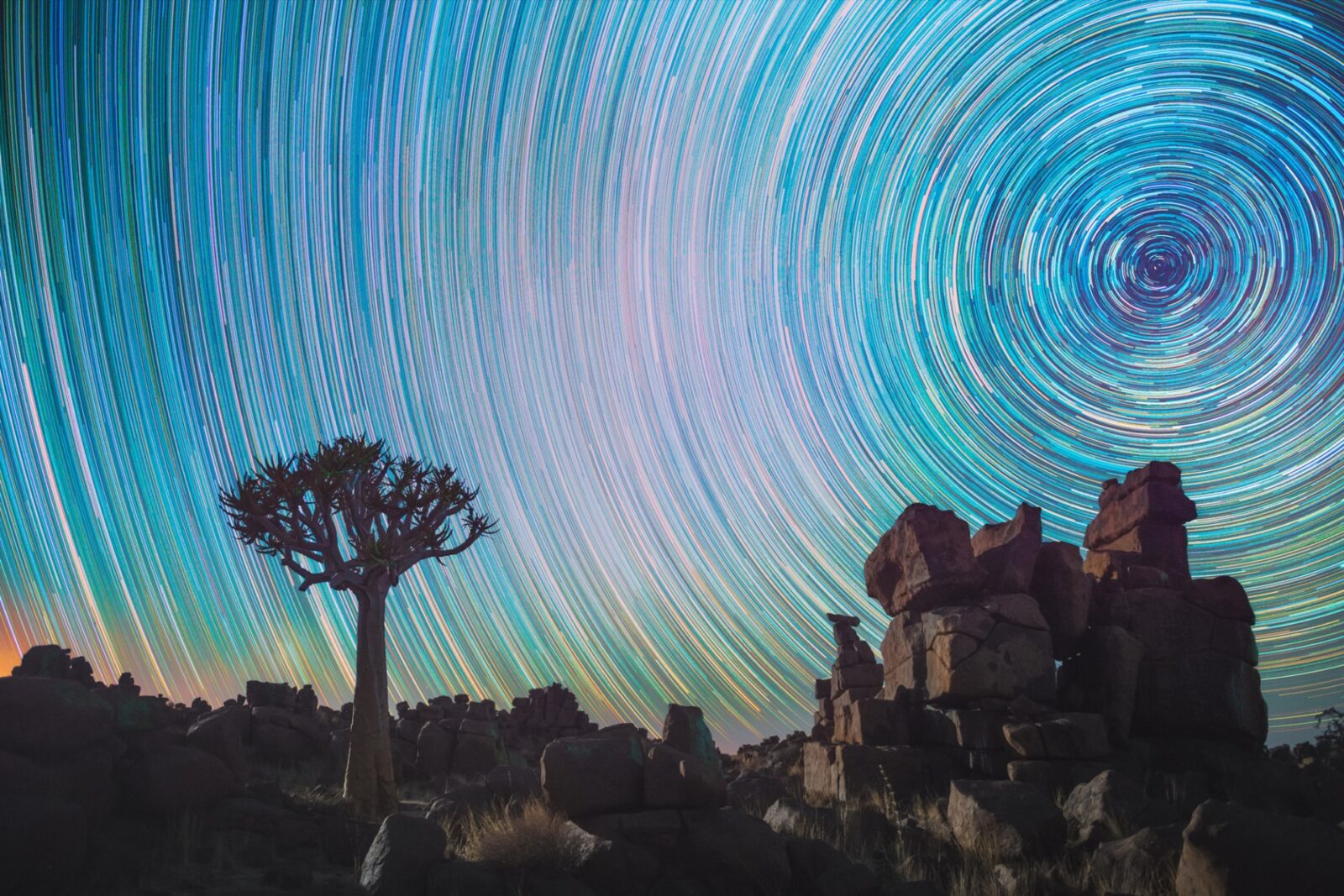
Daniel grew up in a beautiful lake region near Moscow and spent his childhood exploring all the wild places he could find. As an adult, he took a leap into the world of full-time landscape photography and never looked back.
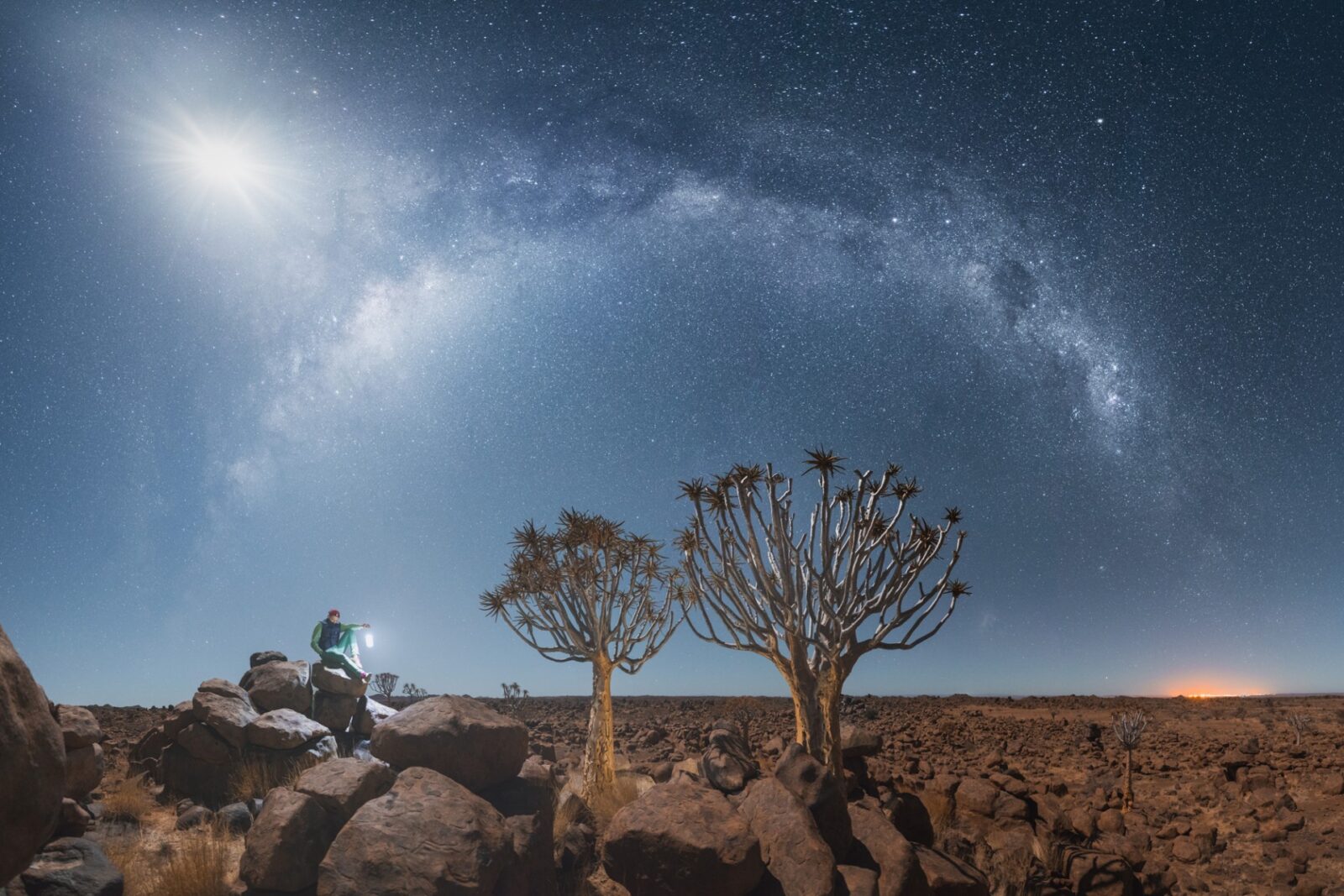
Nowadays he leads photo expeditions to some of the most beautiful places in the world, teaching everything from how to find new, unknown locations and how to control exposure under difficult situations, to techniques for bringing out the essence and feeling of a scene through post-processing.
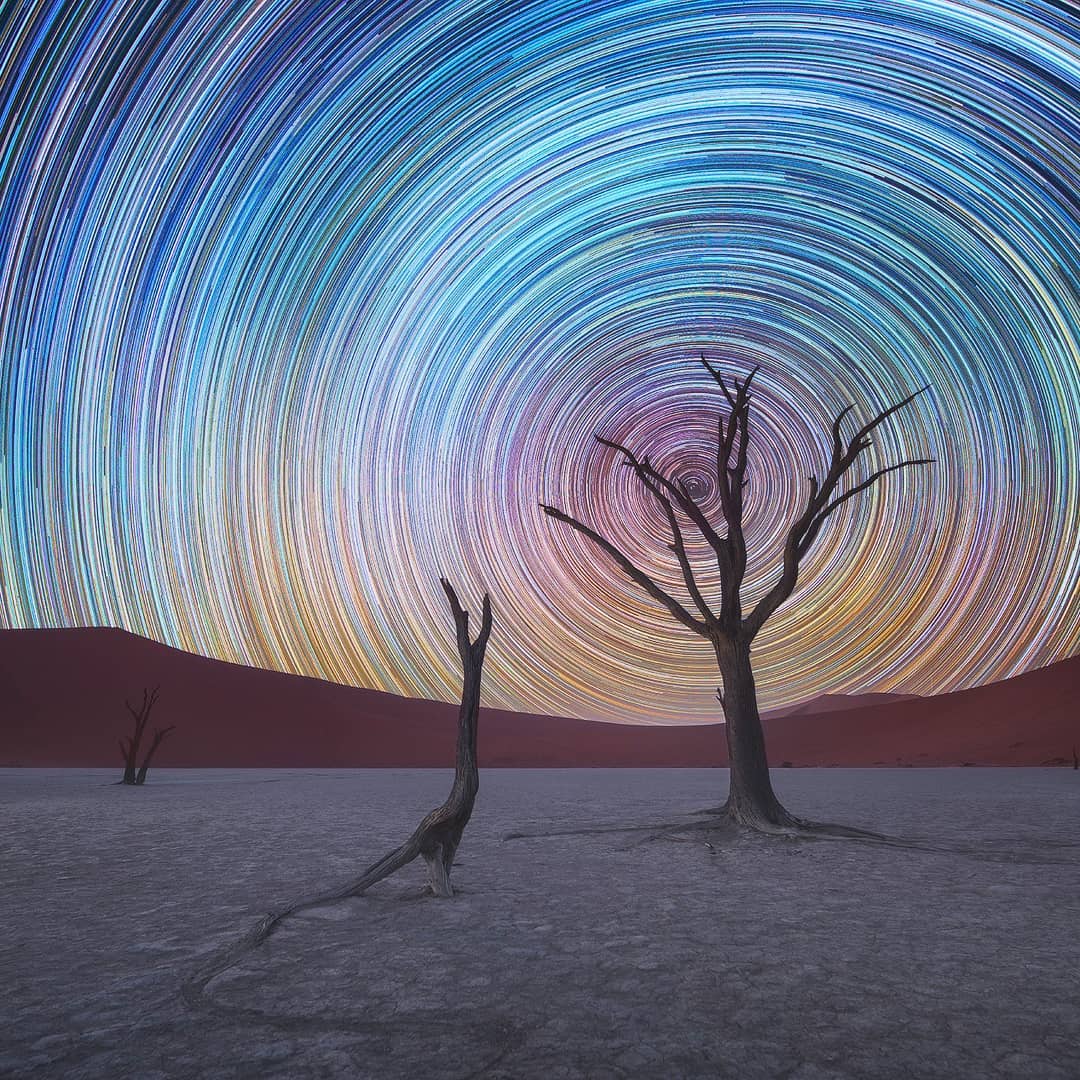
One thing you’ll notice about Daniel’s work is that he doesn’t set himself or others apart from nature. Instead, he loves to show how human presence really and truly belongs in the magnificence of nature. He has developed the art of seeing into that of a science, not only in what landscapes to choose and how to compose but also in his photo editing.
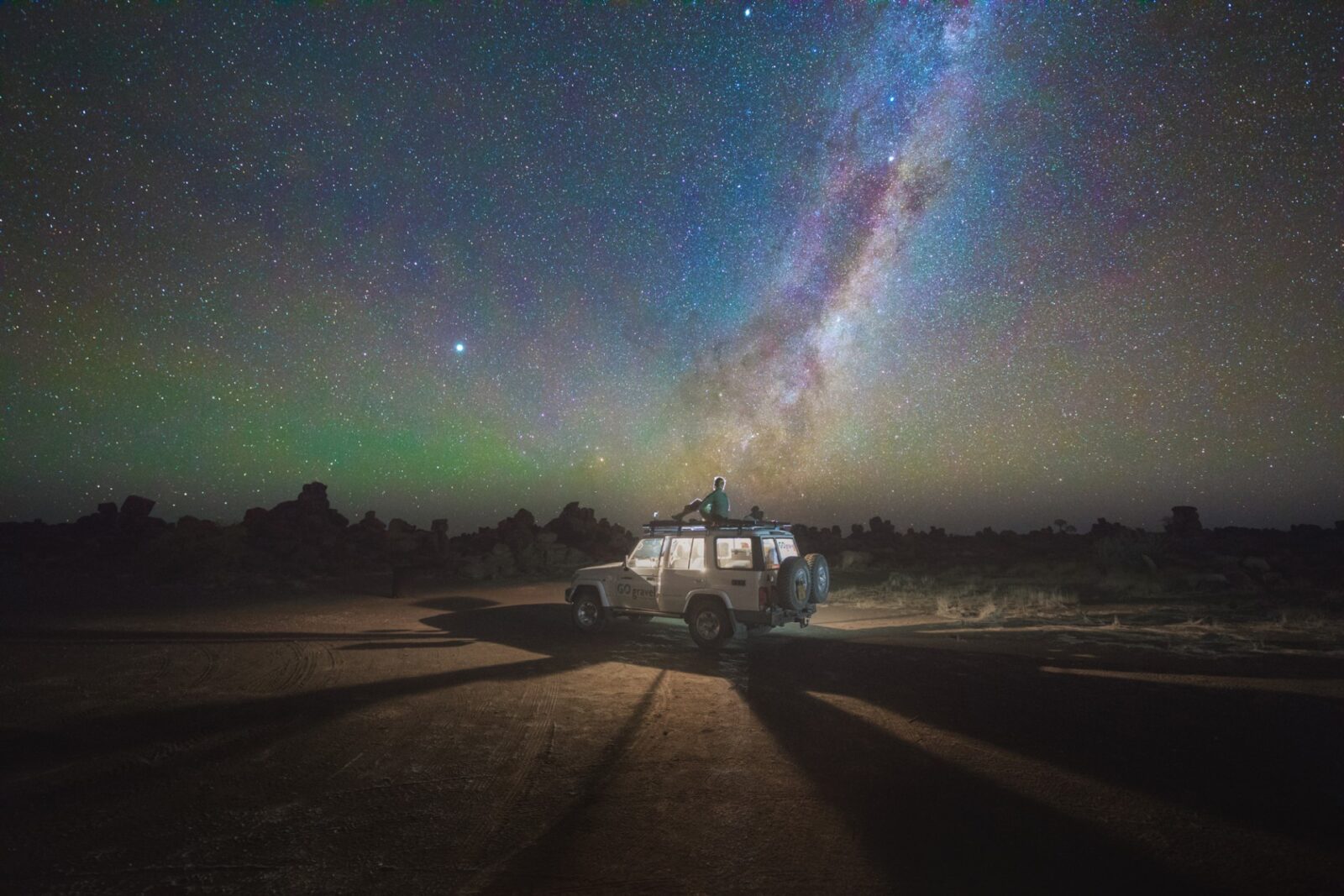
You can see more of Kordan’s exploration through Namibia in the images below, and view his photographs from other locations across the globe on his website and Instagram.






